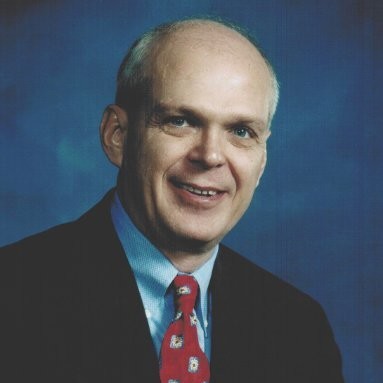How to Create a Monopoly in an Esoteric Niche: SteelCloud CEO Brian Hajost (Part 1)

If you haven’t already, please study our free Bootstrapping course and the Investor Introductions page.
Everyone talks about BIG markets. Learn how to build a monopoly in a small market and, as a consequence, a strong defensible business.
Sramana Mitra: Let’s start at the beginning of your journey. Where were you born and raised? What kind of background did you have?
Brian Hajost: I was born in Lancaster, Ohio. I lived there until I went to college. I had five brothers and sisters including three triplets that were born in 1964 when triplets were an oddity. It was an interesting childhood going from three kids to six in one go. I grew up in Lancaster. It had about 20,000 people.
It’s known for two things. One, it’s the headquarters of Anchor Hocking Glass which was a Fortune 500 company at the time. Second, It’s the birthplace of John Sherman. Those are the two things that Lancaster was known for.
I went to school at Miami University. It was founded 100 years before the city of Florida was founded. It was named after Indians. It was a school that was founded in the early 1800. I took my first job with Burroughs in Columbus in the computer field. At that time, it was pre-PC. Minicomputers were just starting to be a thing. That was my job.
Sramana Mitra: What year was that?
Brian Hajost: That was 1978. I graduated from college and took a job with Burroughs.
Sramana Mitra: What happens after that? It’s a lot of time-space to cover in one half an hour conversation, so help me hit the highlights of your career. How long did you stay at Burroughs?
Brian Hajost: I was there for three years.
Sramana Mitra: What did you do after that?
Brian Hajost: I went to a company called DocuTell which was the inventor of the ATM. I did a lot of missionary work in my life where you bring a brand new technology into an existing market. I stayed there for three years. I was transferred from Chicago to Houston. I went to a wonderful company in Atlanta called Cervantes Systems.
I graduated with a business degree, but that experience re-educated me on the possibilities of business and the organization and treatment of people. It was a great experience. I was there for 11 years. I developed products and bought a division of companies. I primarily worked with banks. In all of my career, the employees and the customers were the happiest. The products were well known and we led sectors even though we were a small company. It was a wonderful experience in the education of business. Investors bought the company a couple of times. Nothing changed during those 11 years.
CheckFree bought us in 1996. I was recruited away and I came to the Washington DC area. I worked for a document management company for five years. It was another technology that was leading edge. We developed new products and worked with both customer support and developers. We ran a division of that company which had about 3,000 customers and 100 employees.
I left there when the company was acquired by a German firm. After that, I came to SteelCloud. I came to SteelCloud in 2001 as the Executive Vice President of Marketing and I left as the present COO in 2016. I came back in 2009. I have been here since 2009.
Sramana Mitra: I thought that we are doing an entrepreneur journey story on this and it seems like you are not the founder of SteelCloud.
Brian Hajost: I am the founder of what we do today. We had to do a complete reboot startup in 2014. The entrepreneur startup story here is really the reformation of a company from five people up to where we are today starting from 2014.
This segment is part 1 in the series : How to Create a Monopoly in an Esoteric Niche: SteelCloud CEO Brian Hajost
1 2 3 4 5
Featured Videos
Can 1M/1M Help Me Raise Money?
How Does 1M/1M Democratize Entrepreneurship Education?
How Does 1M/1M Democratize Management Consulting?
When Is The Right Time To Join 1M/1M?
Can 1M/1M Help Me With Business Development?
Can 1M/1M Help Me With Market Sizing?
Can 1M/1M Help Me Validate My Product?
Will I Have Private 1-on-1 Sessions In 1M/1M?
How Does 1M/1M Help Entrepreneurs Connect With Silicon Valley?
Mentoring or Consulting?
Why Does 1M/1M Charge $1000 a Year?
Why Does 1M/1M Partner With Local Organizations?
Why Don\’t Mentoring Networks Work?
Why Is It Important To Study With 1M/1M Now?
Dan Stewart Story
Vikrant Mathur Story
